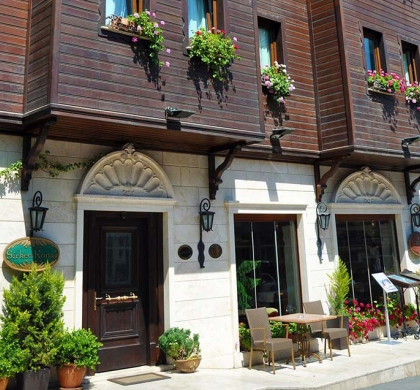Buy or gift a stand-alone digital subscription and get unlimited access to dozens of back issues for just £18.99 / $18.99 a year.
Please register at www.exacteditions.com/digital/cornucopia with your subscriber account number or contact subscriptions@cornucopia.net
Buy a digital subscription Go to the Digital EditionAfter World War II Emin Barın (1913–87) created an entire new language for calligraphy. By Elizabeth Meath Baker
Emin Barın graduated from middle school in 1928, the year the Latin alphabet was introduced in Turkey. For the son of a calligrapher, illuminator and bookbinder, and the grandson of a medrese professor, who was already absorbed in these arts himself, the momentous nature of the change must have been obvious: it would have seemed to sound their death knell. In fact, this turned out to be far from the case.
Barın, whose father died when he was only ten, left home to study art in Ankara in 1933 and never returned. Later he won a scholarship to germany, which he took up in 1937. These were Tumultuous years in Europe, yet the study of calligraphy and typography, especially of Roman scripts, was clearly both vital to the emerging Turkish state, and unachievable within it.
What it must have been like for an ambitious and immensely conscientious 24-year-old Turkish student in Weimar and Leipzig in those years up to 1943, when Baran finally returned to Turkey? Curiously, although he arrived in Weimar just four years before the Bauhaus had been forcibly closed, and its teachers, Klee, Gropius, Kandinsky et al, had fled Germany, and in the year of the notorious Entarte Kunst (Degenerate Art) exhibition, the academic world of lettering and bookbinding seemed to continue as usual. His children remember him describing shortages of materials for his work, as factories were turned over to munitions, but not the sense of danger which must have been ever-preseent. His son Tevfik still has the Erica typewriter that Barın bought from his elderly landlady so as to give her a little cash.
For 44 years of his career after his return from Germany until his death in 1987, Barın was wholely dedicated to work in the graphic arts. In the public sphere he carried out numerous commissions, lettering the national coins, in 1946; the monumental carved inscriptions for Atatürk’s mausoleum, the Anıt Kabir; and the inscriptions to celebrate the 500th anniversary of the conquest of Istanbul at important locations around the city. All of these beautifully executed examples of Turkish writing in Roman lettering are in a sense the fruit of his intensive German studies – very modern, and very much of their time.
Starting in 1960, he started to experiment with calligraphic techniques, taking his skill in a different direction. He felt that the masters of calligraphy of the past had reached a perfection that could not be emulated. Instead he had the courage to create something new, using the Kufic script in particular to create bold, innovative designs, yet still holding to the grammatical rules of art…
This article was published to coincide with Bir Yaz Sevdalası, a Yapı Kredi exhibition in Istanbul of Emin Barın’s work. For information about his binding company, see Barın Yazı ve Cilt
Harald Hauptmann, who led the archaeological team which unearthed this find, near the city of Urfa, explains why the early Neolithic sites of southeastern Turkey are rewriting history.
The Camondo family, once dubbed ‘the Rothschilds of the East’, amassed a fortune in Turkey before moving to Paris in 1869. There, in the rue de Monceau, they established an exquisite collection of 18th-century French art, which was bequeathed to the nation in 1935. By Patricia Daunt with photographs by Jean Marie del Moral.
Mount Ida (Kaz Dağı) is a paradise for wild flowers. Martyn Rix prospected the area from cool, damp north to hot, dry south. There he found and photographed dwarf flax, giant hogweed – and plants that grow nowhere else in the world
In Turkey ‘muhallebi’ forms part of everyone’s diet, from babies to grandmothers, for it is wonderfully nourishing. It has two essential ingredients: pure starch - whether from the flour of rice, wheat, corn or potatoes - which is entirely digestible: and milk, which is rich in protein, calcium and vitamins.
More cookery features




Cornucopia works in partnership with the digital publishing platform Exact Editions to offer individual and institutional subscribers unlimited access to a searchable archive of fascinating back issues and every newly published issue. The digital edition of Cornucopia is available cross-platform on web, iOS and Android and offers a comprehensive search function, allowing the title’s cultural content to be delved into at the touch of a button.
Digital Subscription: £18.99 / $18.99 (1 year)
Subscribe now